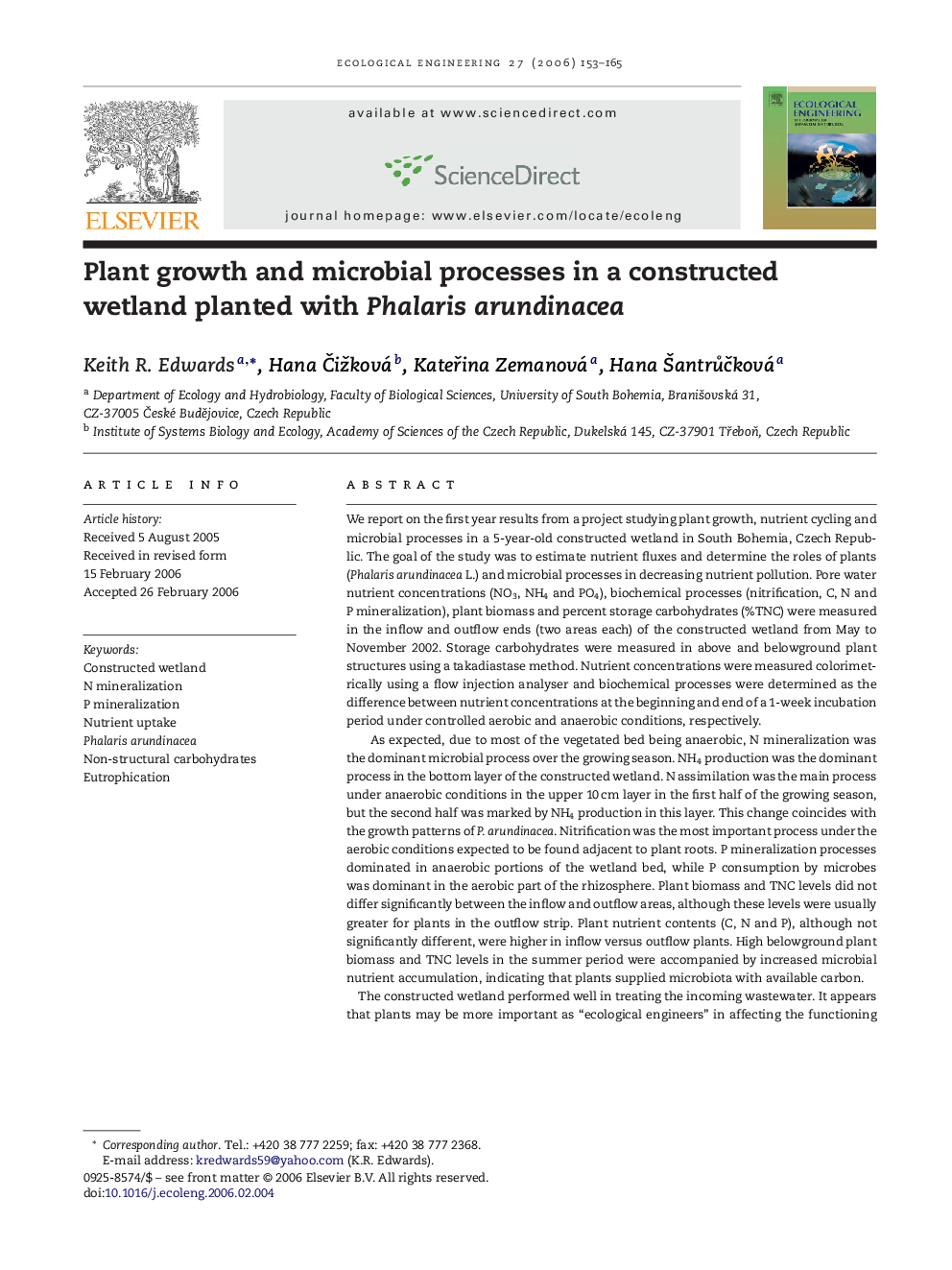| Article ID | Journal | Published Year | Pages | File Type |
|---|---|---|---|---|
| 4391270 | Ecological Engineering | 2006 | 13 Pages |
We report on the first year results from a project studying plant growth, nutrient cycling and microbial processes in a 5-year-old constructed wetland in South Bohemia, Czech Republic. The goal of the study was to estimate nutrient fluxes and determine the roles of plants (Phalaris arundinacea L.) and microbial processes in decreasing nutrient pollution. Pore water nutrient concentrations (NO3, NH4 and PO4), biochemical processes (nitrification, C, N and P mineralization), plant biomass and percent storage carbohydrates (%TNC) were measured in the inflow and outflow ends (two areas each) of the constructed wetland from May to November 2002. Storage carbohydrates were measured in above and belowground plant structures using a takadiastase method. Nutrient concentrations were measured colorimetrically using a flow injection analyser and biochemical processes were determined as the difference between nutrient concentrations at the beginning and end of a 1-week incubation period under controlled aerobic and anaerobic conditions, respectively.As expected, due to most of the vegetated bed being anaerobic, N mineralization was the dominant microbial process over the growing season. NH4 production was the dominant process in the bottom layer of the constructed wetland. N assimilation was the main process under anaerobic conditions in the upper 10 cm layer in the first half of the growing season, but the second half was marked by NH4 production in this layer. This change coincides with the growth patterns of P. arundinacea. Nitrification was the most important process under the aerobic conditions expected to be found adjacent to plant roots. P mineralization processes dominated in anaerobic portions of the wetland bed, while P consumption by microbes was dominant in the aerobic part of the rhizosphere. Plant biomass and TNC levels did not differ significantly between the inflow and outflow areas, although these levels were usually greater for plants in the outflow strip. Plant nutrient contents (C, N and P), although not significantly different, were higher in inflow versus outflow plants. High belowground plant biomass and TNC levels in the summer period were accompanied by increased microbial nutrient accumulation, indicating that plants supplied microbiota with available carbon.The constructed wetland performed well in treating the incoming wastewater. It appears that plants may be more important as “ecological engineers” in affecting the functioning of constructed wetlands. This occurs through the formation of an aerobic layer near plant roots by exudation of O2 and exudation of carbon compounds to support microbial growth. Plants do take up nutrients directly (5 and 1.5% of the annual input of N and P, respectively, in this study), but this is probably a minor role.
